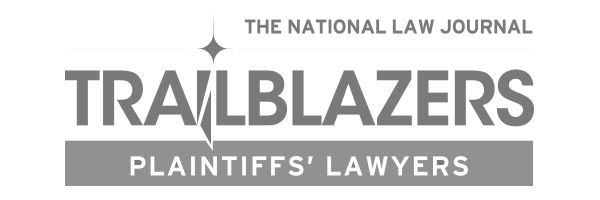Claims against Toyota in Sudden Unexpected Acceleration Case Expanded in New Court Filing
SANTA ANA, Calif. – Toyota Motor Corp. (NYSE: TM) faces new and expanded charges by consumers who claim the world's leading automobile company deliberately deceived the public about serious safety concerns regarding sudden unintended acceleration (SUA), a new court filing details.
Among the new charges leveled today against the car manufacturer in an amended complaint, plaintiffs allege that the automaker secretly purchased vehicles with acceleration defects from consumers and compelled owners to sign strict confidentiality agreements preventing them from discussing their experiences as part of the agreement.
These events were allegedly never reported to the National Highway Traffic Safety Administration (NHTSA) or mentioned when Toyota testified to Congress, the complaint adds, and attorneys believe similar cases exist.
The 1,065-page complaint, filed in the U.S. District Court for the Central District of California, also details orders given by Toyota to its employees on ways to keep internal communication about the unintended acceleration from damaging the company in litigation or in the court of public opinion. Those orders include directives from Toyota that employees remove names of executives in SUA-related e-mails, refrain from using specific SUA terms and send attachments in separate e-mails.
"The deeper we dig into the facts that surround Toyota, the more damning the evidence that Toyota was aware of the issue, and failed to act responsibly," said Steve Berman, co-lead counsel and managing partner at Seattle-based Hagens Berman. "The revelation that they bought up the cars in question and prevented the owners from talking about their experience is curious at best, nefarious at worst."
The complaint also includes copies of internal Toyota documents detailing thousands of reports of sudden accelerations, which the company began collecting in January 2000. The complaint also details reports from Toyota employees who replicated SUA events in testing, and reported the results to the company.
Internal Toyota documents included in the filing detail circumstances surrounding the deaths of 29 people in incidents connected to sudden-acceleration problems between March 1992 and January 2010.
"As we read these documents, we were amazed at both the quantity and specificity of data Toyota collected about these cases, and the completely dispassionate way they evaluated the impact on the public," Berman said. "The document surrounding the 29 deaths was especially jarring, and should have been more aptly named 'the death chart.'"
At the same time, Toyota continued to issue public statements denying its vehicles' throttle control systems were defective, the suit states.
Attorneys believe that Toyota was well aware of the scope and volume of its acceleration defects, yet continued to reject requests from independent experts as well as its own technicians and engineers to examine SUA and install a fail-safe or brake-override system to prevent throttle control problems, the lawsuit states.
The complaint claims that a number of Toyota technicians confirmed instances of Toyotas accelerating out of control. These technicians could not identify the exact cause of the acceleration problems during their field tests, but did rule out pedals and floor mats. Toyota executives did not share these findings with Congress during testimony.
The complaint also provides detailed reports from service managers at Toyota dealerships who allegedly experienced SUA events after vehicles were already serviced for recalls. In many cases, Toyota replaced the throttle bodies and, again, did not disclose these events to the NHTSA, the lawsuit states.
Meanwhile, Toyota publically blamed SUA on driver error, sticky accelerators and instances of accelerators getting stuck under floor mats, according to the complaint.
Reports from some of these technicians were included in the massive collection of documents given to Congress during hearings in February 2010. However, the lawsuit alleges that Toyota made it difficult for regulators and Congress to discover its own documented evidence of SUA.
Attorneys contend that Toyota vehicles installed with an electronic throttle control system (ETCS) needed a fail-safe mechanism - a standard feature offered by many other automotive manufacturers - to stop acceleration problems and keep consumers safe.
According to the complaint, Toyota was aware it needed to install a fail-safe or brake-override system in ETCS vehicles, but rejected these recommendations to meet profitability and production goals.
The complaint identifies at least 55 different Toyota makes and models that featured an ETCS with no fail-safe system installed. Attorneys representing a nationwide class of consumers and businesses suffering from economic losses seek to have these vehicles repaired or returned for a pro-rated refund.
The revised complaint names 52 additional plaintiffs to represent the millions of consumer and commercial class members impacted by Toyota acceleration defects. It also provides alternative legal venues if the court decides against trying the case under California law. Click here for more information.
# # #
About Hagens Berman
Hagens Berman Sobol Shapiro LLP is a consumer-rights class-action law firm with offices in nine cities. The firm has been named to the National Law Journal’s Plaintiffs’ Hot List seven times. More about the law firm and its successes can be found at www.hbsslaw.com. Follow the firm for updates and news at @ClassActionLaw.
Contact
Ashley Klann
[email protected]
206-268-9363





